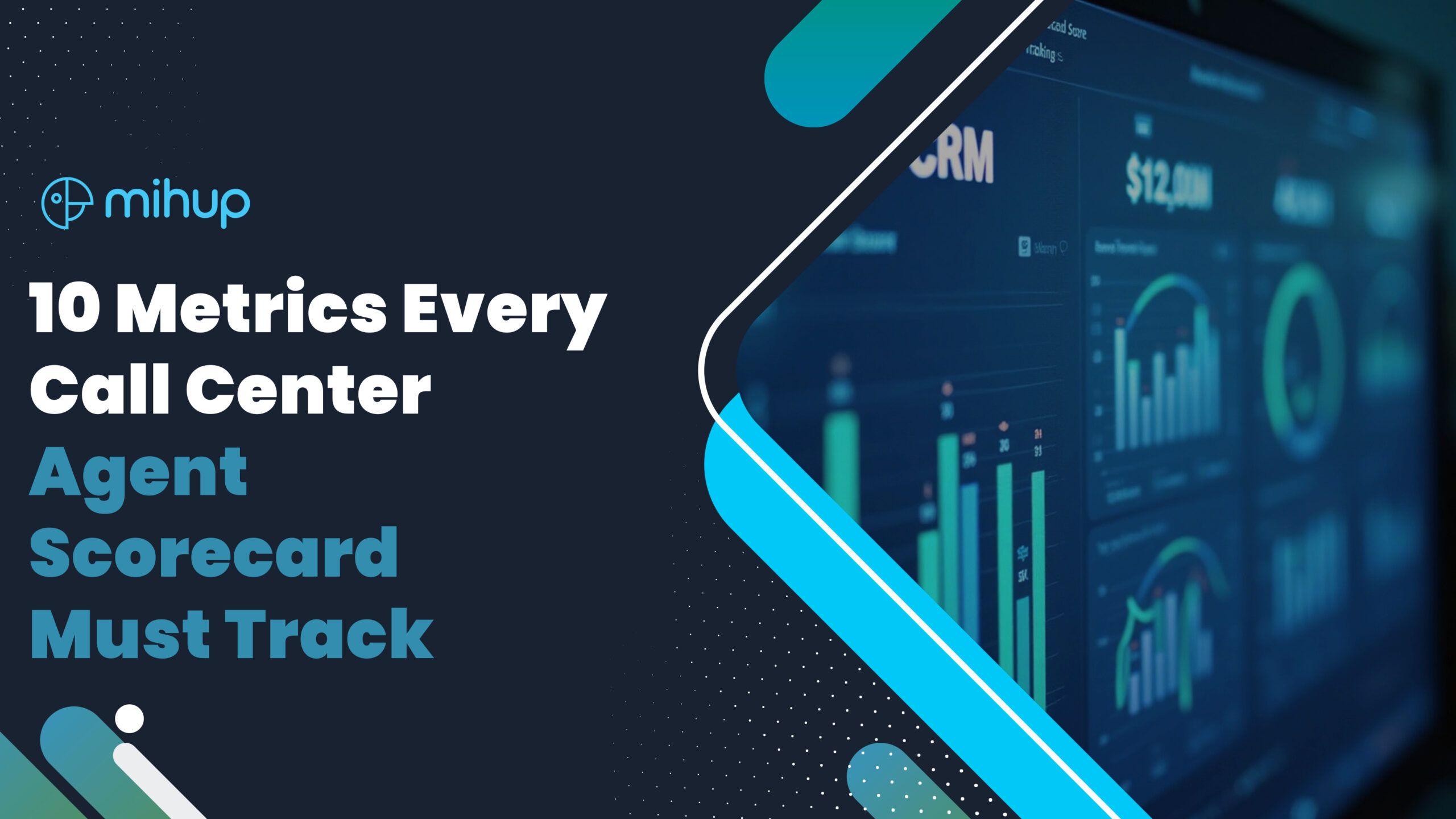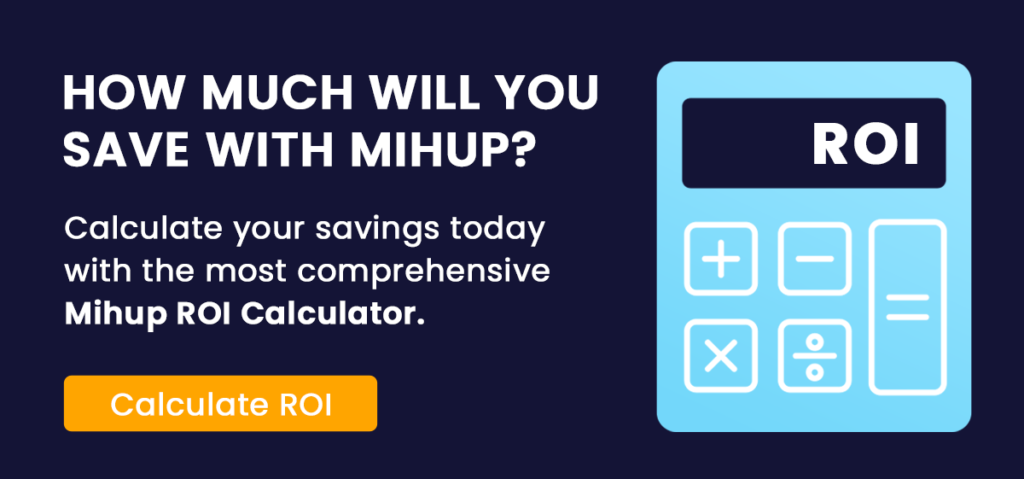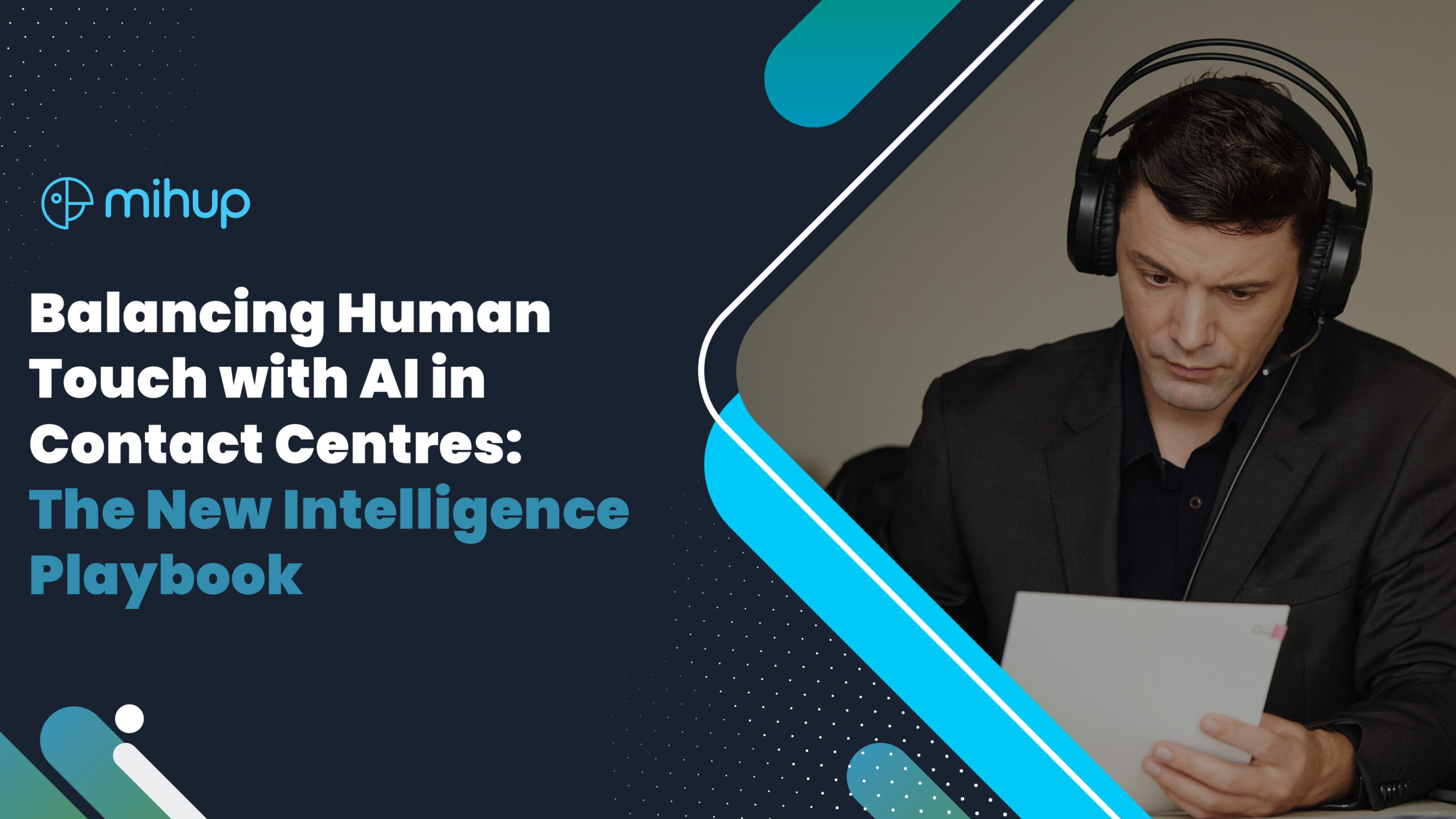How do you know which agent is delivering results, who is underperforming, and who is quietly costing you money? And more importantly, how do you turn those underperformers into top performers? That’s where the agent scorecard makes a heroic entry, a systematic, data-driven framework designed to evaluate and enhance agent performance during every customer interaction.
Today, in this data-centric call center landscape, agent scorecards are not nice to have; they are your call center’s performance compass. It guides supervisors and agents alike, pointing toward areas of excellence and identifying growth opportunities.
In this blog, we have identified 10 essential metrics that belong on every call center agent scorecard. Let’s explore these metrics and discover how they can transform your call center operations.
1. Customer Satisfaction (CSAT)
Customer Satisfaction (CSAT) is a cornerstone of the contact center. It measures how well you meet your customers’ needs. This index is based on feedback received directly from your customers, typically 1-5 or 1-10, and it is often profoundly valuable as an indication of service quality.
Key Collection Methods:
- Post-call automated surveys
- Email feedback forms
- SMS follow-ups
- Interactive voice response (IVR) questionnaires
Analyzing CSAT Data:
- Track scores by agent, team, and time period
- Identify patterns in low-scoring interactions
- Compare CSAT against other metrics like handle time
- Set benchmark scores for performance standards
A strong CSAT tracking system assists organizations in identifying specific scenarios in need of improvement, from agent training gaps to process inefficiencies. By constantly reviewing CSAT data, organizations can change their approaches in order to provide consistently better experiences for their customers.
2. First Call Resolution (FCR)
First Call Resolution denotes the ability of a customer service representative to resolve an issue with no follow-up. This metric directly influences overall customer satisfaction and operational effectiveness and is measured using the percentage of customer issues resolved first contact.
A high FCR rate indicates:
- Reduced customer effort
- Lower operational costs
- Increased customer loyalty
- Improved agent efficiency
To increase FCR rates, call centers should consider these proven strategies:
- Comprehensive Knowledge Base: Provide agents with up-to-date, searchable information
- Decision-Making Authority: Empower agents to make quick decisions within defined limits
- Use Skill-Based Routing: Route calls to agents with relevant experience
- Frequent Agent Training: Ensure agents are up to date on products, services, and typical issues
The effective FCR rate will usually be between 70-75% – however, this can vary by industry and the complexity of customer issues.
3. Average Handle Time (AHT)
Average Handle Time (AHT) is the total time spent on a customer interaction, including talk time, hold time, and after-call work. Call Centers use AHT to better manage efficiency and utilize resources when properly applied.
A balanced AHT approach focuses on:
Speed without compromise: Agents should strive to resolve the calls as fast as possible while still providing quality of service.
Accurate post-call documentation: Ensure that the agent documents accurately after the call while still minimizing the time
Hold management: While the agent may not always be in charge of putting a user on hold, ensuring the hold time is as little as possible is essential.
Of course, while a plan to reduce AHT can increase the capacity of the call centre,it shouldn’t come at the expense of First Call Resolution or customer experience. Setting realistic AHT targets based on call complexity and the workings of the customer is important.
Pro tip: Break down the AHT components so you can improve the specifics:
- Talk time
- Hold duration
- Post-call processing
- System navigation time
4. Net Promoter Score (NPS)
Net Promoter Score (NPS) assesses customer loyalty based on asking one question: “How likely are you to refer our service to another?” Customers respond with a rating from 0 to 10, creating three categories:
- Promoters (9-10): Loyal enthusiasts
- Passives (7-8): Satisfied but unenthusiastic
- Detractors (0-6): Unhappy customers
To calculate NPS, you subtract the percentages of detractors from the promoters, which will give you a score between -100 to +100. High NPS scores indicate strong relationships between your loyal customers and a latent potential for greater business growth.
Call centers can leverage NPS feedback to:
- Identify patterns in agent performance
- Develop targeted training programs
- Refine service protocols
- Create personalized customer experiences
When companies complete regular NPS tracking administering post-call surveys, they can increasingly take data-driven actions and recognize the exact details of what agents did well in, and areas of improvement related to customer interaction.
5. Cost per Call (CPC)
Cost per Call (CPC) is a critical financial measure, as it shows the actual cost of every customer interaction, area and staff costs, total call treatments, and Call Center activity. CPC is simply calculated by dividing your total operational costs by the number of calls closed in the same time period.
A well-optimized CPC helps call centers:
- Track resource allocation – To see where costs can be trimmed where it won’t adversely affecting the service
- Measure agent efficiency – How agents are performing relative to each other, the team, and the shift
- Guide budgeting decisions – To make decisions about staffing and technology investing
The ideal CPC varies by industry and service type, but tracking this metric enables managers to:
- Set realistic cost targets
- Identify cost-saving opportunities
- Balance quality with operational expenses
Consistent usage of CPC will assist the call center find the balance between competitive price while maintaining quality service for customers. When instituted in this way, the call center can utilize a data-driven manner to facilitate strategy development and allocate resources appropriately.
6. Turnover Rate
Agent turnover rate reflects the amount of employees that have departed a call center during a defined period of time. This important measurement has a direct bearing on costs, costs, team morale and service.
A high turnover rate signals potential issues with:
- Work environment
- Management practices
- Career growth opportunities
- Compensation packages
- Training programs
Calculating Turnover Rate:
(Number of Agents Who Left / Average Number of Agents) x 100
Call centers should aim for a turnover rate below industry standards (typically 30-45%). Regular tracking helps identify patterns and implement retention strategies such as:
- Personalized development plans
- Performance-based incentives
- Flexible scheduling options
- Mental health support
- Regular feedback sessions
By monitoring turnover rates, call centers can proactively address workforce stability and maintain consistent service delivery standards.
7. Service Recovery Rate
Service recovery rate measures an agent’s ability to transform negative customer experiences into positive outcomes after a failed initial interaction. This critical metric reflects the percentage of successful issue resolutions following customer complaints or service failures.
A high service recovery rate indicates:
- Swift Problem Resolution: Agents effectively address customer concerns during follow-up interactions
- Customer Retention: Successful recovery efforts help maintain customer loyalty
- Brand Protection: Proper handling of service failures safeguards the company’s reputation
Tracking service recovery rates helps identify:
- Agents who excel at turning difficult situations around
- Common issues requiring multiple interactions
- Training opportunities for improved first-contact resolution
Call centers can boost service recovery rates by empowering agents with decision-making authority, maintaining comprehensive knowledge bases, and implementing targeted coaching programs based on performance data.
8. Missed and Declined Calls
Missed and declined calls are essential KPIs and are directly related to revenue and customer satisfaction. A large percentage of missed calls could indicate issues in staffing or poor call distribution, while declined calls could suggest skill gaps in your team.
Key Impact Areas:
- Lost business opportunities
- Decreased customer loyalty
- Reduced first-contact resolution rates
- Negative brand perception
To reduce these metrics:
- Implement automated callback systems
- Create skill-based routing protocols
- Deploy real-time monitoring dashboards
- Adjust staffing levels based on historical call patterns
A strong tracking system can identify trends in missed calls, including the times when missed calls occurred, and which departments had more missed calls than others. This analysis provides managers with insights to make data-informed decisions regarding allocating resources and workforce training needs to maximize call center performance.
9. Quality Assurance Scores
Quality assurance scores are a full set of performance criteria that assess agents’ overall compliance with service standards and protocols when providing customer services. Quality Assurance (QA) scores typically assess:
- Call Opening: Professional greetings and identity verification
- Communication Skills: Clarity and articulation, listening appropriately, demonstrating empathy
- Problem-Solving: Accuracy of solution provided, performed escalation procedures
- Compliance: Adherence to regulatory requirements and company policies
- Call Closing: Proper summarization and confirmation of resolution
A well-designed QA scoring mechanism has a standardized rubric, typically scored in a -100 point scale, with varying weights for specific elements or aspects of performance. Providers can assess agents on a regular basis and their QA scores provide information on training requirements, ensure top agents get recognition and provide an avenue for consistent service for team members across the call center.
Call centers can maximize their QA operational calls by incorporating real-time monitoring where compliance metrics are tracked through the automation of metrics with the capability of being able to initiate corrective adjustments/issues and coaching opportunities as they arise.
10. Adherence to Schedule
Adherence to schedule assesses how well agents follow their assigned shifts, breaks, and actual work time. Although we may forget about this metric, it is vital to maintain the efficiency of the call center, plan staffing levels, and create a uniform customer experience.
A high schedule adherence rate means:
- Better workforce planning
- Reduced hold times and missed calls
- Improved service levels and customer satisfaction
To improve adherence, call centers should:
- Use real-time monitoring and workforce management tools
- Provide agents with clear expectations and timely schedule updates
- Build buffer time into shifts to accommodate unexpected delays
- Encourage accountability with performance dashboards and recognition programs
Calculating adherence is simple:
(Total Time Agent Was Available as Scheduled / Total Scheduled Time) × 100
Industry standards for adherence rates are often set at 85 – 95%, depending on the complexities and structure of the call center.
A well-tracked adherence will provide supervisors with a measure of operational control and suggested areas to correct management of shifts or the agent’s management of time. It is an important measure that also has a clear and direct line of support to AHT, FCR, and missed calls.
Conclusion
When you measure these 10 essential metrics on your call center agent’s scorecard, you will set up a well-rounded performance evaluation system that drives your agents and organization towards success. Each metric is an important piece of the puzzle in defining how effective and efficient your contact center is.
The real magic happens when you turn metrics into meaningful action plans for improvement. Advanced conversation intelligence technology like Mihup.ai will be a game-changer in this regard! Mihup.ai’s advanced analytics will help you transform call center metrics into actionable improvements.
Contact Mihup.ai today to learn more about how our conversation intelligence platform will help you produce valuable customer experiences through the lens of data. Are you ready to elevate your call center performance?





